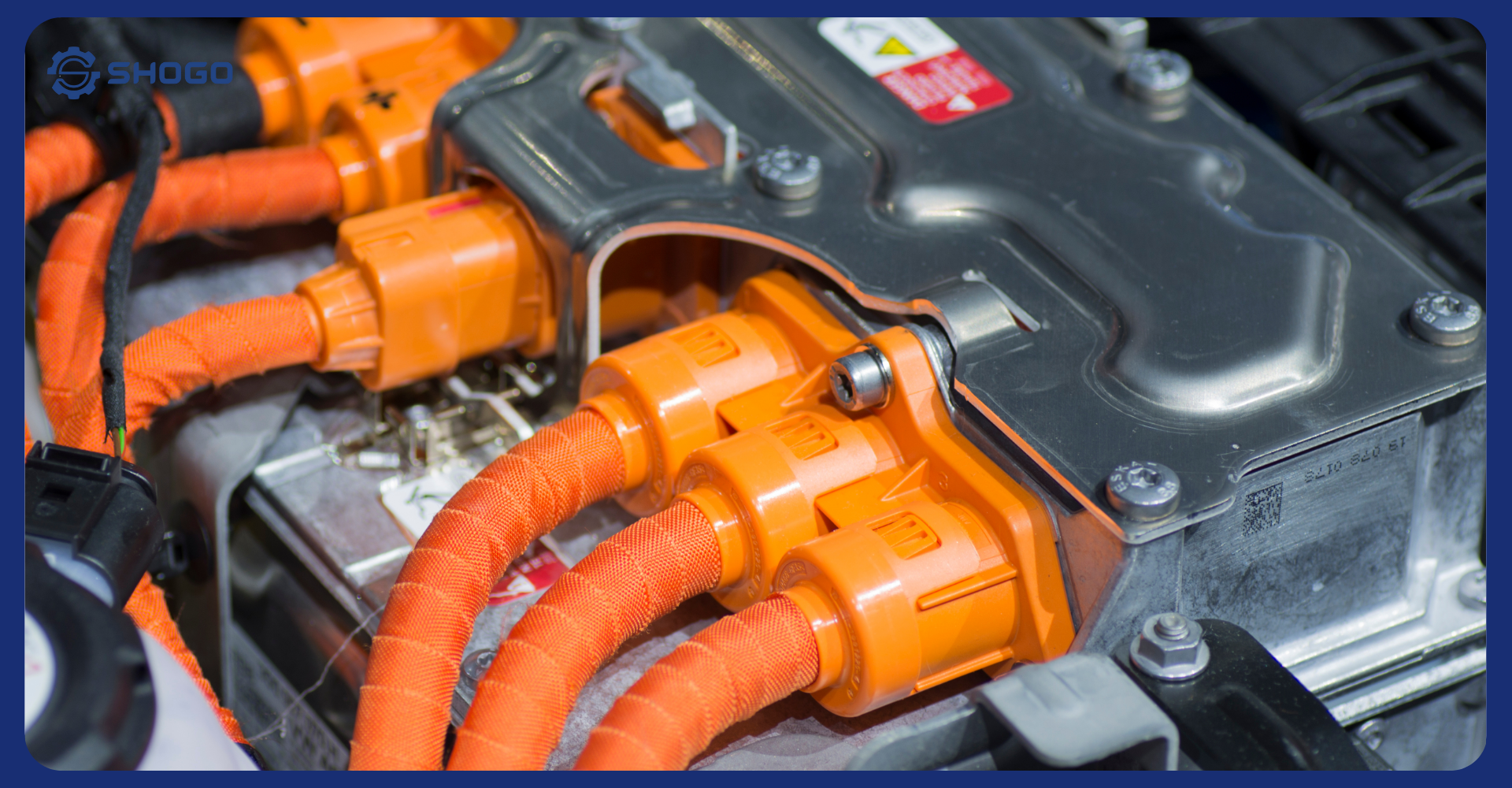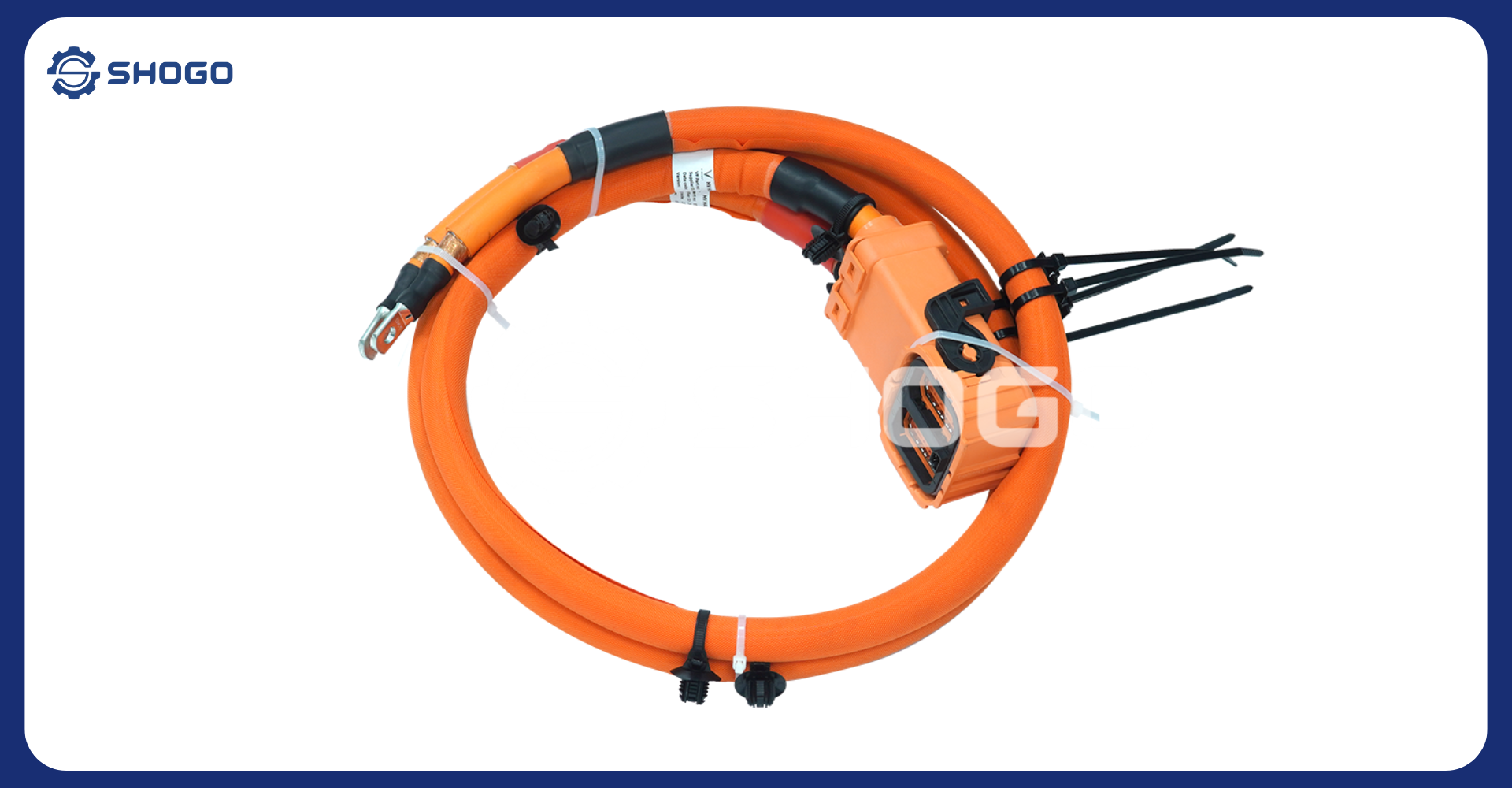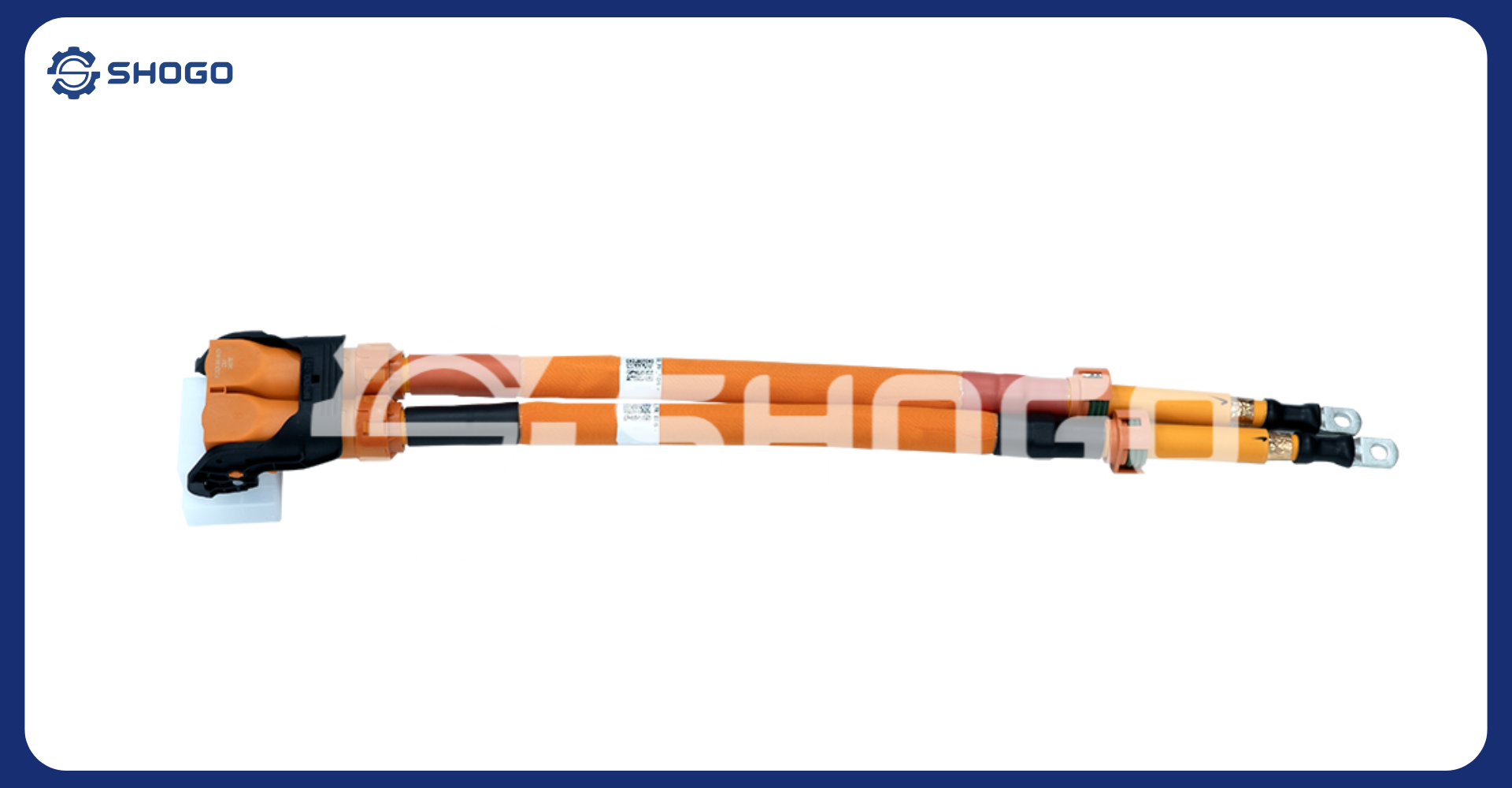
1. What Is an EVHV Cable?
EVHV Cable (Electric Vehicle High Voltage Cable) is a specialized cable used in EVs to transmit high-voltage current (600V–1500V) between key components, including:
- Battery pack
- Inverter
- Electric motor (e-motor)
- On-board charger
- DC/DC converter
2. How Does an EVHV Cable Work?
An EVHV cable performs three essential functions:
a) Transmitting High-Power Electrical Energy
The cable carries high-voltage DC or AC power between major systems:
- DC from battery → to inverter
- AC from inverter → to motor
- In regenerative braking, it also transmits current back from the motor to the battery
b) Electrical Insulation and Safety Protection
Given the high voltage involved, EVHV cables have multi-layer insulation systems:
- Primary insulation made from XLPE, silicone, or TPE
- Outer sheath that is flame-retardant and resistant to oil and chemicals
- Some cables feature double insulation to meet strict safety standards (e.g., ISO 19642)
c) Electromagnetic Interference (EMI) Shielding
EV systems are sensitive to EMI. EVHV cables include braided copper or aluminum shielding to:
- Absorb and suppress electromagnetic noise caused by high current
- Prevent the cable from interfering with other onboard systems
- Ensure accuracy for ADAS, safety sensors, and BMS communications
3. Real-World Use Cases of EVHV Cable Operation
| Scenario | EVHV Cable Function |
|---|---|
| Vehicle acceleration | Transfers DC from battery → inverter → AC to motor |
| Regenerative braking | Transfers current from motor → inverter → back to battery |
| Fast DC charging | Carries current from charger to battery conversion unit |
| High ambient temperatures | Maintains insulation stability and current flow |
| Strong vibrations or shocks | Withstands mechanical stress without breakage or disconnection |
4. Intelligent Monitoring and Sensor Integration
Modern EVHV cables can include built-in sensors to monitor:
- Temperature spikes or hotspots
- Real-time current flow
This allows the Battery Management System (BMS) or ECU to:
- Trigger early warnings
- Automatically adjust power output
- Protect battery life and ensure electrical safety
5. Conclusion
An EVHV cable is not just a power line—it’s an intelligent energy artery inside every modern EV. It plays a critical role in:
- High-voltage transmission
- Electrical insulation and system safety
- EMI shielding
- Real-time monitoring and diagnostics
Without a properly designed EVHV cable, EVs risk performance issues, overheating, or electrical failure.
Looking for EVHV Cable Solutions?
We provide certified EVHV cables (ISO, SAE, UL) with optional sensor integration—suitable for battery packs, inverters, motors, and fast chargers. Contact our engineers for expert guidance and custom solutions.


